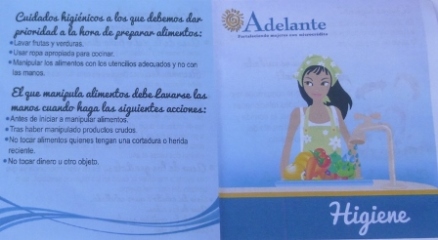 My most recent field visit brought me to Choluteca in the south of Honduras. Prior to my journey I was told that it was extremely warm there, so I knew I was in for a real treat. The first two days it was surprisingly cool because it is the rainy season or ‘winter’. But when the clouds disappeared from the sky for just a while, the sun became burning hot. This combination of pouring rain and strong sunshine provides for the green mountains that characterize Choluteca. – See more at: http://www.adelantefoundation.org/en/read-our-blog/42-from-the-field/176-hygiene-education-in-choluteca-education-tailored-to-our-clients-needs#sthash.pIPB2NsC.dpuf
My most recent field visit brought me to Choluteca in the south of Honduras. Prior to my journey I was told that it was extremely warm there, so I knew I was in for a real treat. The first two days it was surprisingly cool because it is the rainy season or ‘winter’. But when the clouds disappeared from the sky for just a while, the sun became burning hot. This combination of pouring rain and strong sunshine provides for the green mountains that characterize Choluteca. – See more at: http://www.adelantefoundation.org/en/read-our-blog/42-from-the-field/176-hygiene-education-in-choluteca-education-tailored-to-our-clients-needs#sthash.pIPB2NsC.dpuf
Mi viaje más reciente me trajo al departamento de Choluteca en el sur de Honduras. Antes de comenzar mi trayecto, me dijeron que haría mucho calor y desde entonces supe que sería un buen viaje. El clima durante los primeros dos días fue sorprendentemente fresco porque era la temporada de lluvia o el “invierno”. Pero cuando las nubes desaparecieron del cielo por un corto rato, el sol ardió. Esta combinación de lluvias torrenciales y el calor del sol ardiente establece las montañas verdes que caracterizan a Choluteca. – See more at: http://www.adelantefoundation.org/es/lea-nuesto-blog/42-from-the-field/176-hygiene-education-in-choluteca-education-tailored-to-our-clients-needs#sthash.mDwTqqU8.dpuf
